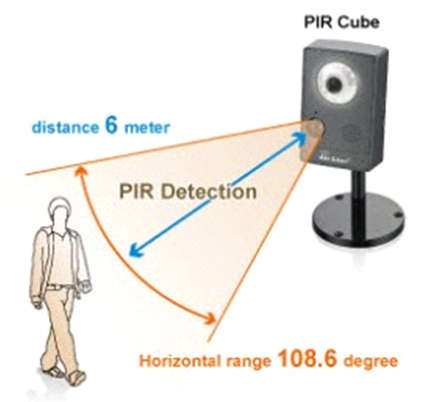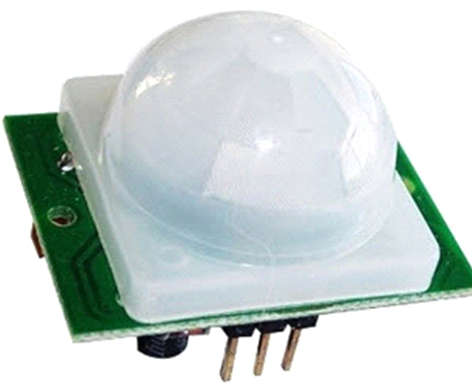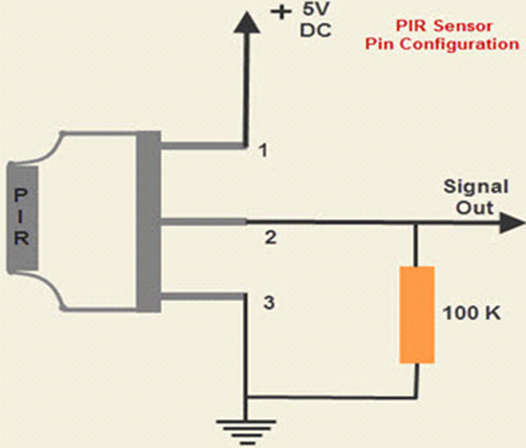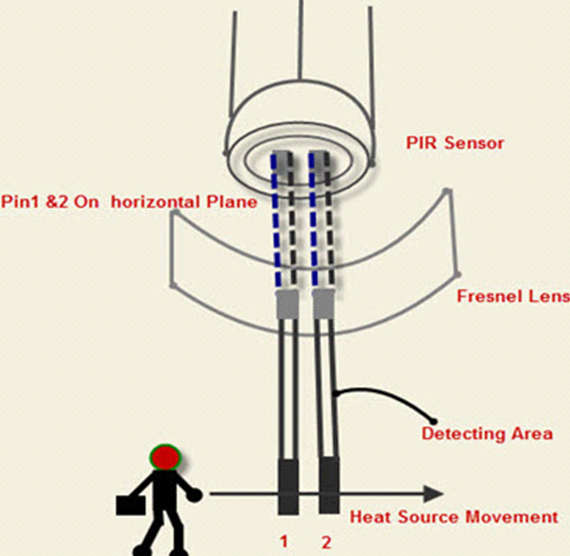- Typically, radio waves, optical radiations, and occasionally acoustic waves are used to create wireless communication with a distant object. These wireless communications essentially alter their frequencies. All of these communications use varying frequencies, beginning with HF, LF, VHF, UHF, and other bands. Acoustic waves use the ultrasonic region of the frequency spectrum, whereas optical radiations use the infrared and visible portions of the spectrum. Radio waves are the term for micro- and millimeter waves.

- The region of the electromagnetic spectrum known as infrared radiation (IR) has wavelengths that are longer than visible light and smaller than microwaves. The infrared zone is between 0.75 um and 1000 um, and IR waves are too tiny for human eyes to see. Near-infrared is defined as the wavelength range between 0.75um and 3um; mid-infrared is defined as the range between 3um and 6um, and far infrared is defined as the range above 6um.
- These radiations are widely used in a wide range of sensors and electrical devices. IR waves are used by everything from simple gadgets like TV remotes to complex ones like night-vision equipment. The fundamentals of the PIR sensor and its uses are covered in the section that follows.
Passive Infrared Sensor (PIR)
- The abbreviation PIR stands for passive infrared. The word “passive” denotes that the sensor does not actively participate in the process, i.e., it does not actively emit the referred IR signals but instead passively detects the IR radiations originating from the nearby human body.

- Radiation levels are measured and transformed into an electrical charge that is proportional to that level. This charge is then further enhanced by an integrated FET and supplied to the device’s output pin, where it can be applied to an external circuit for additional alarm stage triggering and amplification. Up to 10 meters can be detected by a PIR sensor at an angle of +15° or –15°.
- The image below depicts a typical PIR sensor pin configuration; the pinouts are quite simple to understand, and they can be easily arranged into a working circuit using the following points.

- The Passive infrared sensors consist of three pins as indicated in the diagram shown above.
- Pin1 corresponds to the drain terminal of the device, which should be connected to the positive supply 5V DC.
- Pin2 corresponds to the source terminal of the device, which should be connected to the ground terminal via a 100K or 47K resistor. Pin2 is the output pin of the sensor, and the detected IR signal is carried forward to an amplifier from pin 2 of the sensor.
- Pin3 of the sensor is connected to the ground.
Working Principle of PIR Sensor
- PIR sensors are more complicated than the other sensors because they have two slots. These slots are made of an infrared-sensitive material. The Fresnel lens is used to ensure that the two PIR slots can see beyond a certain distance. When the sensor is turned off, the two slots detect the same amount of IR. The ambient amount comes from the outside, the walls, the room, and so on.
- When a human or animal passes by, the first slot of the PIR sensor is intercepted. This results in a positive difference between the two bisects. The sensor generates a negative differential change between the two bisects when a human body leaves the sensing area. To improve humidity/temperature/noise/immunity, the infrared sensor is housed in a hermetically sealed metal housing. To protect the sensing element, there is a window made of typically coated silicon material.

A Motion Detection Circuit Using PIR Sensor
- In the above segment, we have learned the pinouts of a PIR sensor, now let’s move on to study a simple application of the PIR sensor. The below diagram depicts a motion detector PIR sensor circuit. In the presence of human IR energy or radiation, the infrared sensor detects the energy and immediately converts it into minute electrical pulses, enough to activate the transistor BC547 into conduction and to make its collector go low.
![]()
- The IC741 – which has 8 pins – is used as a comparator. Pin3 is designated as the reference input, while Pin2 is designated as the sensing input. When the transistor’s collector terminal goes low, the potential pin2 of the IC falls below the potential pin3. It immediately raises the IC’s output, triggering the relay driver, which consists of another transistor and a relay. The relay activates and switches on the circuit-connected alarm device.
- The capacitor 100uF/25V ensures that the relay remains active even if the passive infrared sensor is turned off, possibly due to the radiation source exiting. To ensure adequate efficiency, the PIR sensor device must be properly enclosed in a Fresnel lens cover.
PIR Sensor-Based Projects with Abstracts
- The capacitor 100uF/25V ensures that the relay remains active even if the passive infrared sensor is turned off, possibly due to the radiation source exiting. To ensure adequate efficiency, the PIR sensor device must be properly enclosed in a Fresnel lens cover.
PIR Sensor-based Automatic Door Opening System
- The primary goal of this project is to open and close doors in places where a person’s presence is required, such as hotels, shopping malls, theatres, and so on. A PIR sensor detects the presence of a human body and sends pulses to the 8051 microcontrollers in this project. The motor driver is controlled by this microcontroller by sending appropriate pulses to its input and enabling pins.
Security Alarm System based on PIR Sensor
- The primary goal of this project is to provide security. This project is built around a PIR sensor and an integrated circuit that produces a siren. This sensor detects infrared radiation emitted by humans and produces a digital output. The UM3561 IC receives this digital output. As a result, it produces sound whenever a human body is detected. The UM3561 IC is a ROM IC that generates a variety of siren tones, including fire engine sirens, ambulance sirens, machine gun sounds, and police sirens.
Human Detection Robot Using PIR Sensor
- The human detection robot employs a PIR sensor to detect humans and is powered by an 8-bit microcontroller. This project uses passive infrared sensors to detect human beings and is primarily used to rescue people trapped in debris during earthquakes. It essentially brings humans trapped beneath debris to the surface, effectively saving them.
PIR Sensor-based Stepper Motor Control
- The main goal of this project is to use a PIR sensor to control a stepper motor. This project is heavily reliant on robotic technology. This technology is primarily employed in advanced applications. Internally, the PIR sensor is used in this project for excellent performance- the IR sensor is used in burglar alarm systems, light switches, visitor present monitoring, and robots. Stepper motors are widely used in robotics because they provide continuous rotation as well as incredible precision.
